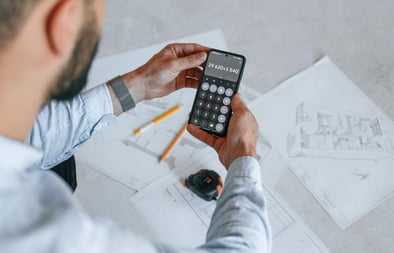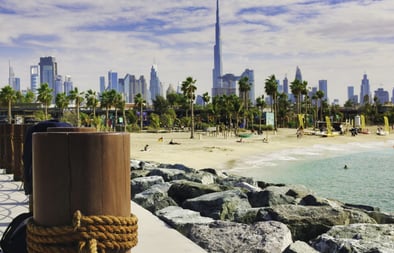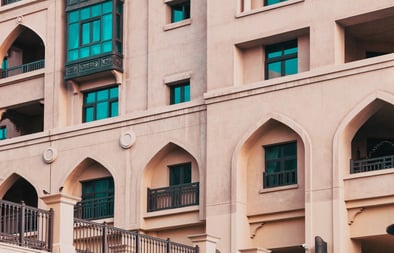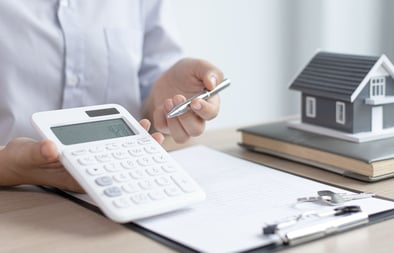Dubai’s real estate market continues to thrive, attracting investors, homeowners, and tenants alike. To maintain transparency and streamline property transactions, the Dubai Land Department (DLD) and the Real Estate Regulatory Agency (RERA) have established a set of standardized forms, known as RERA forms. These forms are designed to safeguard the rights of all parties involved—buyers, sellers, landlords, tenants, and brokers—ensuring that every transaction is conducted smoothly and with full transparency.
Whether you are buying, selling, or renting property in Dubai, understanding the various types of RERA forms is essential. This comprehensive guide breaks down the key RERA forms, explaining their purpose, how they work, and their role in Dubai’s real estate transactions.
What is RERA?
Before diving into the types of RERA forms, it’s crucial to understand what RERA is and its role in Dubai’s real estate sector. The Real Estate Regulatory Agency (RERA) is the regulatory arm of the Dubai Land Department (DLD). Established in 2007, RERA is responsible for overseeing the real estate market, developing regulatory frameworks, and ensuring that all property-related transactions are fair, transparent, and legally compliant.
RERA plays a pivotal role in setting regulations that protect the interests of property buyers, sellers, tenants, and landlords. One of its key responsibilities is to standardize the documentation used in property transactions, ensuring that all parties are aware of their rights and obligations.
Importance of RERA Forms
RERA forms have been implemented to bring transparency and standardization to real estate transactions. These forms outline the rights, obligations, and responsibilities of the involved parties, whether it’s a property sale, lease agreement, or a broker’s engagement. The forms act as legally binding documents and help to avoid disputes by clearly defining each party's role.
By using RERA-approved forms, buyers, sellers, tenants, and landlords can ensure that they are protected under the legal framework established by Dubai’s real estate laws.
Types of RERA Forms
There are several key RERA forms that cover different aspects of property transactions in Dubai. Each form serves a specific purpose and is used at different stages of the buying, selling, or renting process. Below is a detailed explanation of the most commonly used RERA forms:
1. RERA Form A – Agreement Between Seller and Broker
Form A is the official contract that establishes the relationship between the seller (property owner) and the real estate broker. It outlines the broker's responsibilities, the agreed-upon commission, and the duration of the agreement. Form A must be signed by both the property owner and the broker before the property can be listed for sale. This form ensures that the seller has authorized the broker to market the property.
Key elements of Form A include:
• Property details (type, location, and condition)
• Asking price for the property
• Duration of the agreement between the seller and broker
• Commission percentage for the broker
• Obligations of both the seller and the broker
• Marketing rights and terms
The form must be submitted to RERA, which will then authorize the listing of the property on official platforms like the DLD’s Ejari system.
2. RERA Form B – Agreement Between Buyer and Broker
RERA Form B is the agreement between a buyer and a real estate broker. It sets out the terms of the broker’s engagement to assist the buyer in finding a suitable property. This form ensures that the broker represents the buyer’s interests, searches for properties based on the buyer’s criteria, and negotiates on the buyer’s behalf.
Key elements of Form B include:
• The buyer’s property preferences (location, type, budget, etc.)
• Duration of the agreement between the buyer and broker
• Commission terms (if applicable)
• The broker’s duties in finding and negotiating property deals
• Terms for property inspections and assessments
Form B provides clarity on the role of the broker when representing a buyer and prevents any potential conflicts of interest by clearly outlining each party’s obligations.
3. RERA Form F – Memorandum of Understanding (MOU)
RERA Form F is one of the most crucial documents in any property transaction in Dubai. It serves as the Memorandum of Understanding (MOU) between the buyer and the seller. This form outlines the agreed-upon terms and conditions of the property sale, including the final sale price, payment terms, handover date, and other important details.
Key elements of Form F include:
• Agreed sale price of the property
• Payment structure and deadlines
• Deposit amount and payment terms
• Timeline for the transfer of ownership
• Conditions for property handover
• Obligations of both buyer and seller during the transaction
Form F must be signed by both parties (buyer and seller) and the brokers involved. Once signed, the form is legally binding and serves as the framework for the property sale.
4. RERA Form I – Contract Between Landlord and Tenant
For rental transactions, RERA Form I is the standard lease agreement between the landlord and the tenant. This form outlines the rights and obligations of both parties, the rent amount, payment terms, and the duration of the lease. It also covers the procedures for renewing or terminating the lease, security deposit requirements, and maintenance responsibilities.
Key elements of Form I include:
• Property details and rental terms
• Rent amount and payment schedule
• Lease duration (typically one year)
• Security deposit requirements
• Tenant and landlord responsibilities (e.g., maintenance and repairs)
• Conditions for renewing or terminating the lease
This form must be registered with Ejari, Dubai’s tenancy contract registration system, to make the agreement legally binding and ensure compliance with RERA regulations.
5. RERA Form U – Contract Between Developer and Buyer
Form U is used in off-plan property sales and is an agreement between a developer and a buyer. This form is essential for documenting the terms and conditions of purchasing a property that is still under construction. It includes details about the construction timeline, payment schedule, and handover date.
Key elements of Form U include:
• The off-plan property’s specifications
• Payment structure and due dates
• Completion and handover dates
• Developer’s obligations in delivering the property
• Buyer’s obligations during the construction phase
Form U serves as a legally binding agreement that holds both the developer and the buyer accountable for fulfilling their respective obligations.
6. RERA Form K – Contract Between Seller and Developer
RERA Form K is another essential document used in off-plan property transactions. It’s the agreement between a property developer and the seller, laying out the obligations for completing the property and transferring ownership to the buyer. This form ensures that all terms related to the development and sale of the property are clearly defined and legally binding.
Key elements of Form K include:
• Development timeline and milestones
• Terms for property delivery
• Seller and developer obligations
7. RERA Form N – Termination of Agreement
Form N is used to terminate any previous agreements between the involved parties, whether in a sale, purchase, or lease contract. It is essential in situations where a deal or agreement is canceled, ensuring that all parties formally agree to terminate the contract and are released from any obligations.
Key elements of Form N include:
• Clear termination of previous contracts
• Release of parties from obligations
• Conditions for deposit refunds or penalties (if applicable)
Form N provides clarity and legal standing to the termination, ensuring both parties are protected.
The Role of Ejari and Oqood Systems in RERA Forms
RERA forms must be registered with official systems such as Ejari (for rental agreements) and Oqood (for off-plan property sales). These platforms, governed by the Dubai Land Department (DLD), serve as online portals to track, register, and manage property transactions, ensuring that all agreements adhere to the legal framework set by RERA.
Ejari is essential for rental transactions and mandates that all lease agreements be registered to ensure legal recognition. Oqood, on the other hand, applies to off-plan properties, providing transparency by tracking all phases of off-plan transactions, from the initial sale to the property handover.
Why RERA Forms Are Crucial in Dubai Real Estate
RERA forms standardize real estate transactions, protect the rights of all parties involved, and ensure that every step of a property deal follows the legal requirements of Dubai. The use of these forms minimizes the risks of misunderstandings, fraudulent activities, and disputes.
By incorporating these documents into every property transaction, Dubai has created a transparent and reliable real estate market. Whether you are an investor, buyer, seller, landlord, tenant, or broker, RERA forms help create a clear, legally-binding agreement, providing peace of mind for all involved.
Conclusion
Navigating Dubai’s real estate market is made simpler through the use of standardized RERA forms. Each form plays a critical role in documenting and safeguarding property transactions, ensuring transparency, fairness, and compliance with Dubai’s legal framework. Whether you're renting, buying, or selling property, it's essential to familiarize yourself with these forms and the responsibilities they entail.
Understanding and correctly utilizing the RERA forms not only ensures a smooth transaction but also protects the rights of all parties involved, fostering trust in Dubai’s growing real estate sector.








































